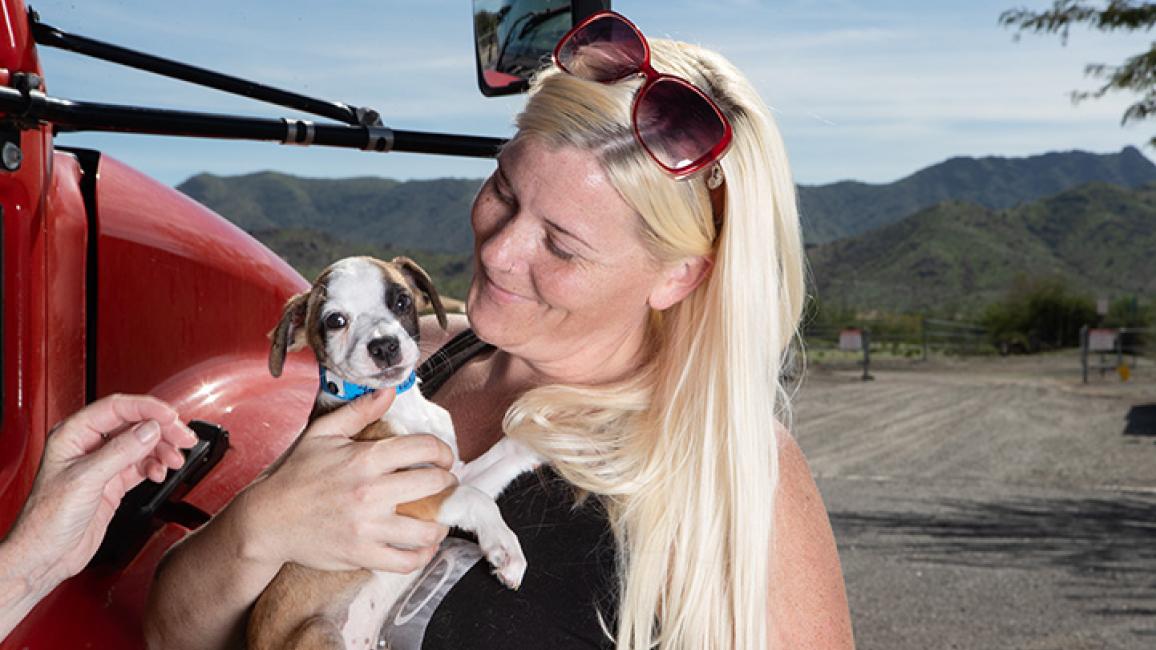Dog and cat transports save lives

Last month, a news station in Phoenix, Arizona, broadcast a story about Maricopa County Animal Care & Control. The title was “Why? MCACC shipping thousands of dogs to shelters across the country.” The story insinuated that because the municipal shelter had a robust transport program, it would be difficult for potential adopters to find an animal they would want, and that local rescue organizations were being deprived of the opportunity to fulfill their missions to take in pets from the local shelter.
It’s understandable that those not fully educated about the fact that 2,200 cats and dogs are killed in shelters every day across this country may not see the wisdom in transporting animals to distant communities. Even many who work within animal welfare may be confused about why such programs are a benefit to both the animals transported and those left behind.
Shelter transport program benefits
First, it’s important to understand that at a basic level, most transports are moving animals from one shelter or community that is oversaturated with animals to another community where those animals are more likely to find homes. The transport provides the sending shelter immediate and needed temporary relief by freeing up kennel space for other animals who are most certainly coming. This relief can give shelters time and resources to explore additional community programming that will get at the source of the problem by stemming the flow of animal intake. This includes programs to increase spay/neuter, adoption marketing, owner retention and more.
There are, though, additional benefits of transfers. As the news story pointed out, many transports include a mix of pets. While some animals being transferred are deemed highly adoptable, often those animals serve as an incentive for the receiving shelter to also take some sick, injured or harder-to-place animals. Keeping a variety of animals in the source community, as well as diversifying the destination community, helps promote adoption as a first choice when people are looking for a new pet.
This reality addresses the concern often raised in a receiving community that their local pets are disadvantaged if pets transported in find homes more quickly than local pets. As communities reach or near no-kill status, puppies and small-breed dogs become harder to find through adoption, and people seeking these dogs may resort to buying puppies from breeders, pet stores or online retailers. By transporting these highly adoptable dogs into areas where they are not otherwise available, we are able to provide the types of dogs many people are looking for, and to keep people in the rescue family. As adoption becomes the standard, all homeless pets benefit.
While there is always an anecdotal story of a local adopter struggling to find the right animal for himself, data shows that there are more than enough homeless pets in shelters for every adopter. In fact, nationwide there are still 800,000 healthy and treatable animals needing homes each year. It is simply counterproductive to argue about who should have “first dibs” on who saves these lives.
If a shelter with which a rescue organization has had a longstanding relationship is able to adopt out and transfer enough animals that fewer and fewer are in need of being pulled by rescue groups, that fact should be celebrated, not criticized. Rescue partners are a critical component of getting the nation to no-kill by 2025, and as we get closer and closer to saving them all, rescue groups will need to adapt. While one shelter may now be at the point where it needs less rescue support, in nearly every state there are going to be nearby communities that still can’t find enough adopters and do not have a consistent transfer program.
Transfers, of course, also benefit the animals themselves. Shelters that are able to transfer animals in large numbers have a reduced length of stay in their shelter for all animals. Anything that reduces how long an animal must remain in the shelter is a benefit. If you have a transport that can take 36 pets at one time, while the local rescue group can only pull five, it makes more sense to choose the option that gets the most animals out in the shortest amount of time.
Saving all the dogs and cats
Best Friends believes strongly that transports are a vital component in the effort to Save Them All. As we expand our engagement with overcrowded shelters throughout the country, we want to ensure that transports become even more strategic and effective. For that to happen, we continue to push for transparency in sheltering. Ensuring that community members have a holistic view of how the shelters in their community are performing is the best way to make sure that transports are meeting their ultimate promise.
While the ideal may be that every homeless pet finds a home in the pet’s same community, many parts of the country aren’t there yet. As our movement continues to increase programming to save lives in every region, transports may diminish. But we aren’t there yet.
So, to answer the question of why: quite simply, because transports save lives.
